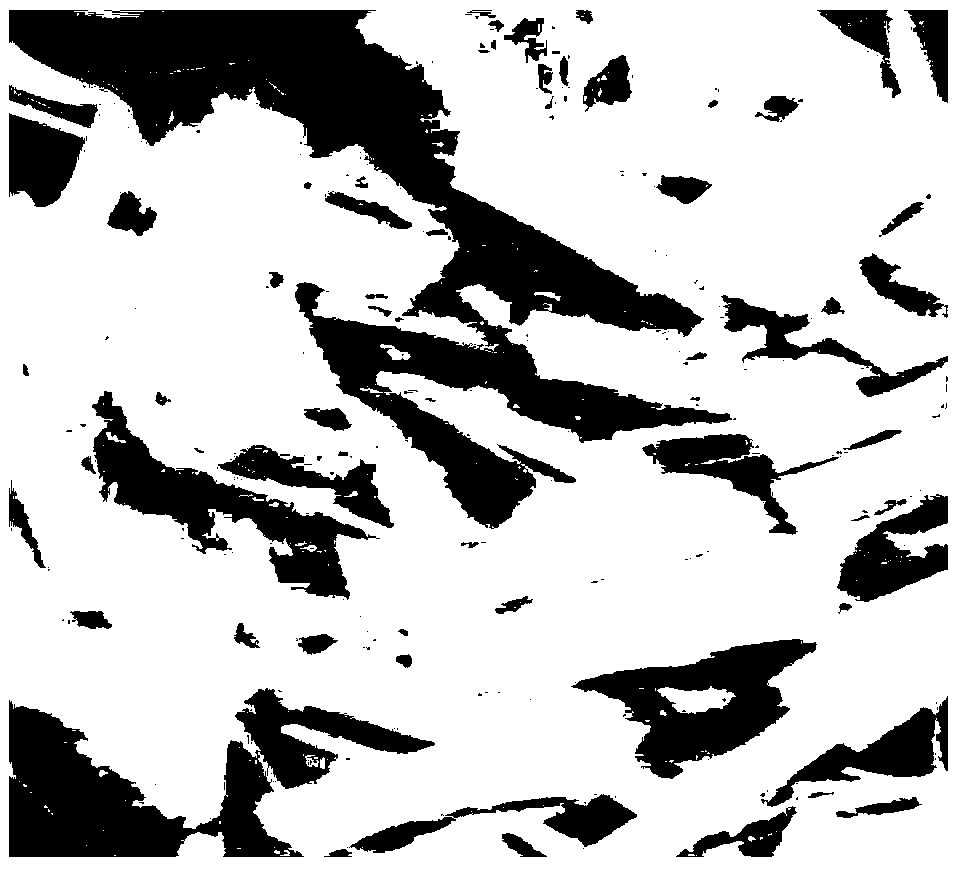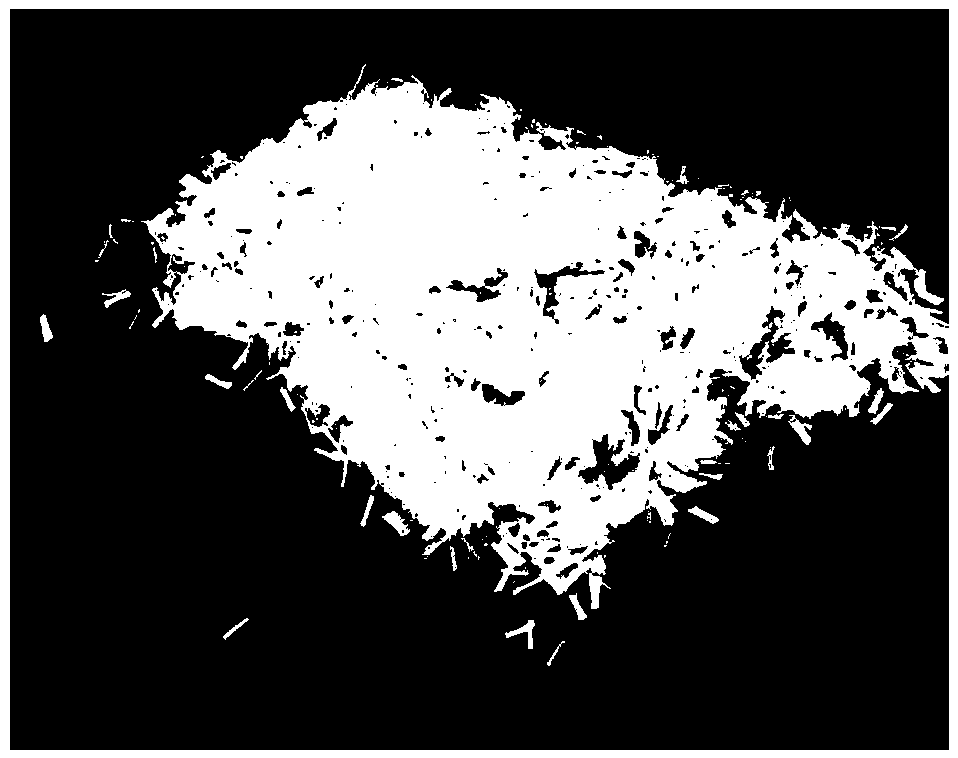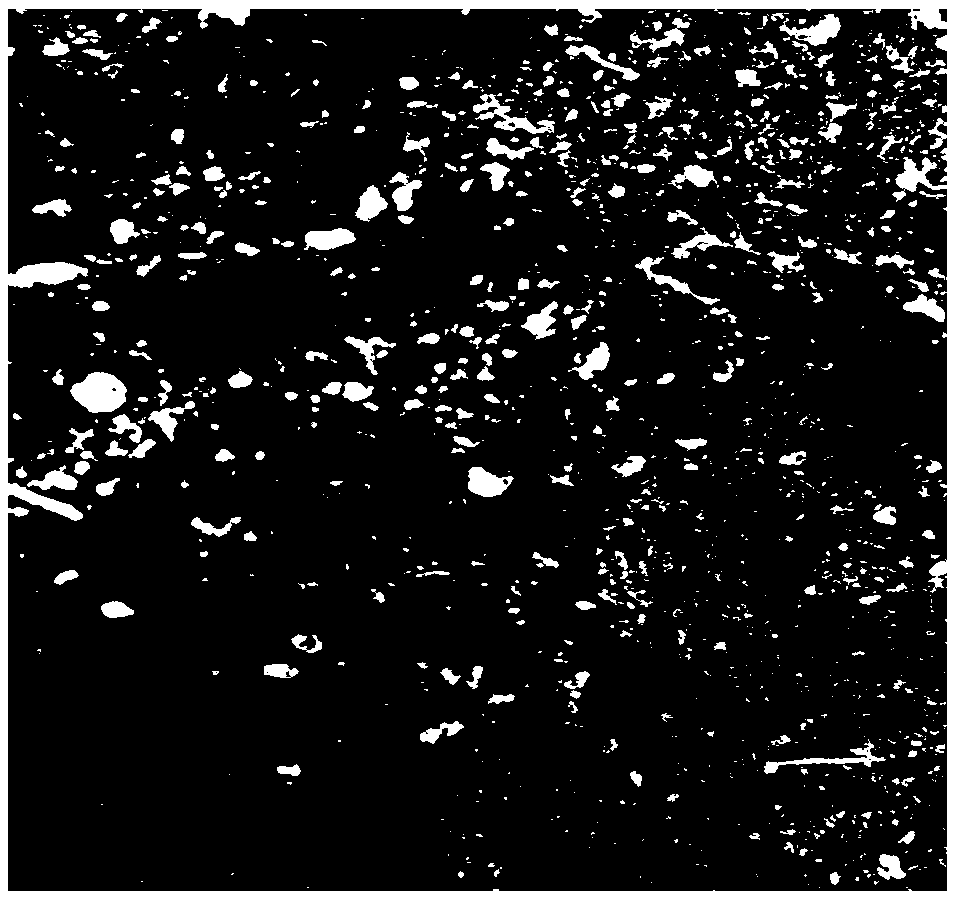Plastic fiber cultivating soil and preparation method thereof
A technology of plasticity and soil cultivation, applied in the direction of organic fertilizers, fertilizer mixtures, fertilization devices, etc., can solve the problems of poor effect, high requirements, and time required for self-degradation of pots and pots, and achieve light weight, good drainage performance, and low price cheap effect
- Summary
- Abstract
- Description
- Claims
- Application Information
AI Technical Summary
Problems solved by technology
Method used
Image
Examples
Embodiment 1
[0053] (1) Take the discarded dry rice straw, process and crush it into straw powder, and mix the above-mentioned plant fiber powder and other mixtures according to the following proportions: 20% loess, 20% straw powder, 10% peat soil, 40% perlite, two-component The ratio of the heat-melt bonding composite fiber accounting for 10% and the total amount of 100% is used as the base material of the plastic culture soil, and the mixture is stirred and mixed.
[0054] (2) Then fill the culture soil mixed and prepared in the above (1) to a bottom diameter of 4cm, an upper diameter of 7cm, a height of 9cm, and a capacity of 180cm 3 In the container, according to the filling density of 0.4g / cm 3 Filling, then add water to make it in a water-saturated state, and then heat treatment at a high temperature of 120°C for 30 minutes, so that the two-component thermally fused composite fibers in the fiber culture soil and the plant fibers of the culture soil are fully bonded, Formed activated...
Embodiment 2
[0056] (1) Take the discarded dry rice straw, process and crush it into straw powder, mix the above-mentioned plant fiber powder and other mixtures according to the following proportions: 30% loess, 10% straw powder, 10% peat soil, 40% perlite, two-component The ratio of the heat-melt bonding composite fiber accounting for 10% and the total amount of 100% is used as the base material of the plastic culture soil, and the mixture is stirred and mixed.
[0057] (2) Then mix the cultivation soil prepared in the above (1), and the follow-up steps are the same as in Example 1.
Embodiment 3
[0059] (1) Take the discarded dry rice straw, process and crush it into straw powder, mix the above-mentioned plant fiber powder and other mixtures according to the following proportions: 10% loess, 30% straw powder, 10% peat soil, 40% perlite, two-component The ratio of the heat-melt bonding composite fiber accounting for 10% and the total amount of 100% is used as the base material of the plastic culture soil, and the mixture is stirred and mixed.
[0060] (2) Then mix the cultivation soil prepared in the above (1), and the follow-up steps are the same as in Example 1.
PUM
| Property | Measurement | Unit |
|---|---|---|
| particle size | aaaaa | aaaaa |
| particle size | aaaaa | aaaaa |
| particle diameter | aaaaa | aaaaa |
Abstract
Description
Claims
Application Information
 Login to View More
Login to View More - R&D
- Intellectual Property
- Life Sciences
- Materials
- Tech Scout
- Unparalleled Data Quality
- Higher Quality Content
- 60% Fewer Hallucinations
Browse by: Latest US Patents, China's latest patents, Technical Efficacy Thesaurus, Application Domain, Technology Topic, Popular Technical Reports.
© 2025 PatSnap. All rights reserved.Legal|Privacy policy|Modern Slavery Act Transparency Statement|Sitemap|About US| Contact US: help@patsnap.com



